25 Types of Nails Matched to Your Construction Project
Author: Omar Alonso | Editor: Omar Alonso
Review & Research: Jen Worst & Chris Miller
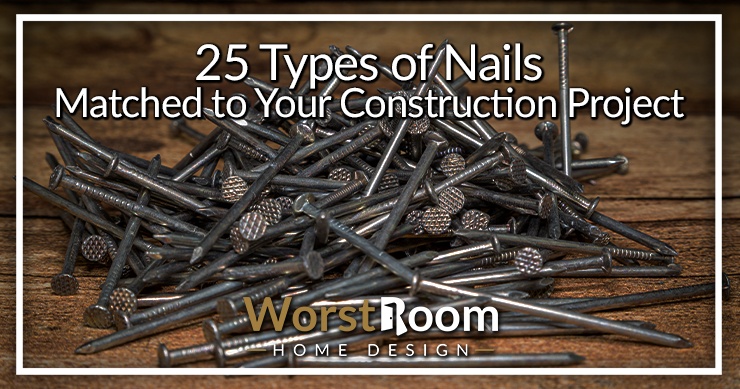
Deceivingly humble, the many types of nails are responsible for holding entire structures together. In use for the last 5,400 years, nails are an integral part of the construction business and carpentry, used for fastening and joining.
These everyday objects have now become an integral part of life around the world, a staple in every toolbox out there.
Though it may seem like all nails are the same—since they all seem to achieve the same purpose of fastening—there’s quite a surprising variety of nails out there, each designed to achieve a particular finish and fulfill a specific purpose.
Therefore, you have nails of different lengths, thicknesses, diameters and heads.
25 Types of Nails
Archaeologists have found nails in Egypt dating back as far as 3,400 B.C. They were made of bronze and have the same shape and design we still use today. It's suspected that the creation of nails goes back even further into our history.
If you’re wondering what kinds of nails you should be using in your next project, here’s a 101 on the different types of nails that are at your disposal. Don't assume you need nails, though. You could need one of the types of screws, so check that out too next.
Common Nails
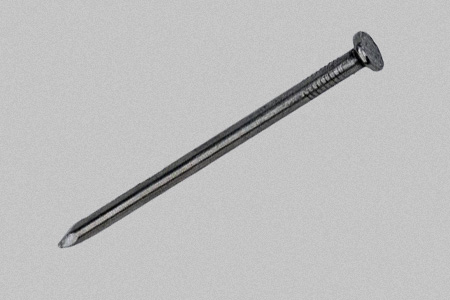
The most commonly available and widely used, common nails, also known as round-head nails or spikes, are the go to for joining pieces of wood or timber to other materials.
These nails result in a rough finish, though it is recommended that you use nails at least three times longer than the thickness of the material that is being nailed.
Common nails are extremely versatile, great for a range of simple and complex jobs. These can range between one and six inches in length and are commonly sold by the pound.
Double-Headed Nails
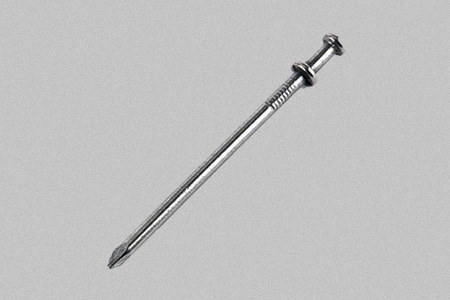
Commonly used in keeping temporary structures up, staging and securing scaffolding, these nails, as the name suggests, have two heads, placed one above the other.
The double-head feature serves to make removing the nail easier—the nail is driven in till the material meets the first head, while the top head remains above for easy removal.
Double-headed nails are also known as duplex nails.
Masonry Nails
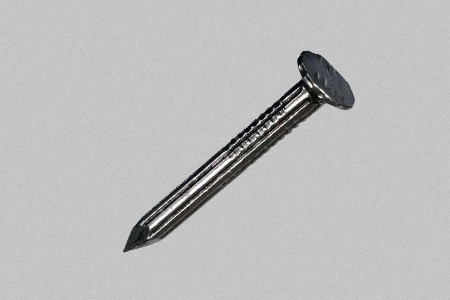
Masonry nails are huge, thick and strong, meant to be easily driven into rock-hard surfaces.
These nails make quick work of concrete and brick and may feature rectangular sections or fluted shafts to prevent any bending or breaking when driven in.
A body of strong hardened zinc lends these nails their strength, allowing you to easily attach stone or brick surfaces to wood.
Masonry types of nails, with their small heads and excellent strength, are used for a range of different projects and come in many varieties. Masonry nails are strong enough to make surfaces chip, so protect yourself against flints with adequate gear.
Finishing Nails
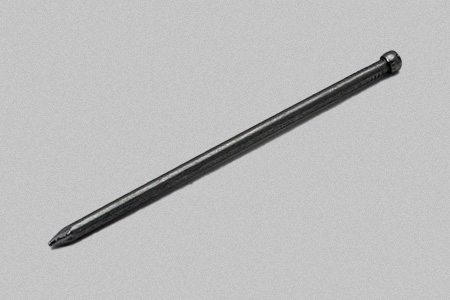
If you’re looking for nail types that hardly leaves a trace of its presence in the final product or molding, a finishing nail is your best bet.
These nails share many similarities with common nails, except for their smaller heads that sit flush against the surface or below it, leading to a super-neat finish where the nail is unnoticeable. This makes finishing nails great for decorative objects and furniture.
The smaller head on these nails also means that there is a lower risk of wood splitting. Finishing nails come in many sizes, ranging in length from one to four inches and are used for a range of projects. These nails are usually made of brass and can be used for decorative purposes, too.
Roofing Nails
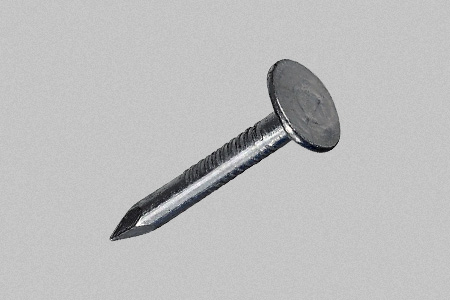
With heavy shafts and large, round heads, roofing nails are designed to be rust resistant, with a body of aluminum or strongly galvanized materials.
As the name suggests, these are adept at holding roofing materials securely in place, thanks to a large head that prevents the thinner material from coming loose.
Roofing nails are especially effective when holding together shingles, composite and asphalt-based materials.
Roofing nails are commonly between three-fourth of an inch in length to one-and-three-fourth inches. The smaller varieties are available for purposes such as attaching roofing felt.
Box Nails
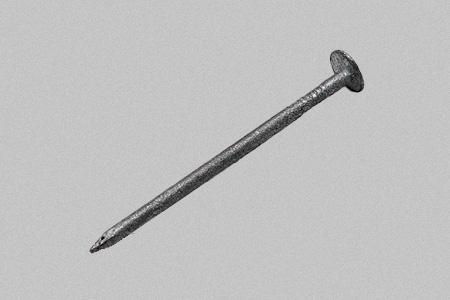
Typically used in light construction projects, you’d be forgiven for confusing box nails with common nails—they’re both extremely similar to look at, except for the slightly thinner body of the former.
Owing to their size, splits in the wood surface is a rarity, but this size is also what makes them unsuited to heavy-duty projects, where structural strength and high holding power are required.
Box types of nails can be anywhere between an inch and three-and-a-half inches in length, suitable to be driven in by most types of hammers.
Casing Nails
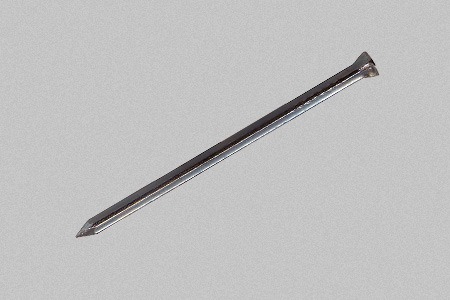
Casing nails are the larger, thicker version of finishing nails. Their bigger build affords more holding power than their finishing cousins, making them the go to for attaching moldings and in other projects where extra holding power is required.
Brads
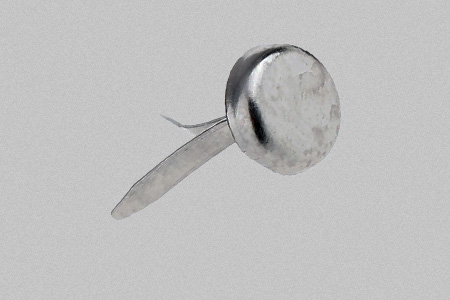
Brads are unique nail types—a variation of the finishing nail, but smaller in size and length. Typically no more than an inch in length, these nails are great for attaching plywood panels, basic cabinet work and making frames.
Annular Ring Nails
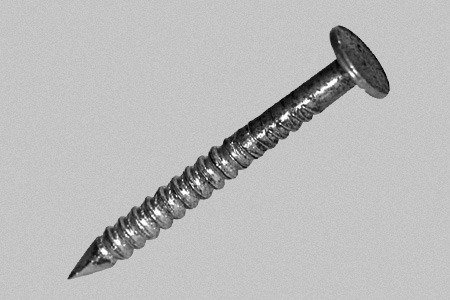
Also commonly known as siding nails, annular ring nails are built similar to common nails, with the exception of the rings along the length of the body. These rings provide a better grip, attaching objects more securely.
Siding nails are commonly used to hold clapboards and shingles in place, as well as for underlayments and paneling. These nails are built thin, made of galvanized steel to be resistant to rust.
Spiral Flooring Nails
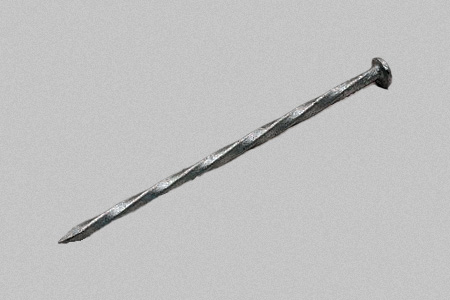
Spiral flooring nails, as the name suggests, have spiral-shaped shafts and are commonly used in subfloor work.
Cut Flooring Nails
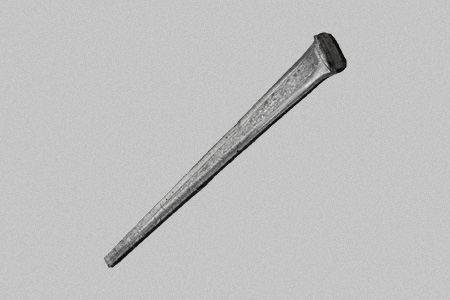
Generally used in automatic nailing machines, cut flooring nails are large, strong cousins of the cut nail.
Cut Floor Brads
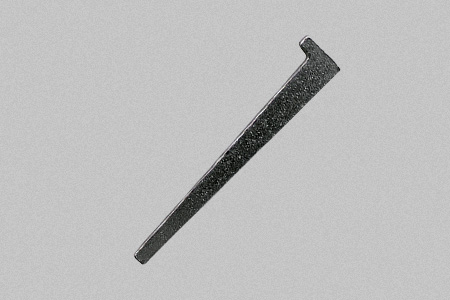
Featuring an L-shaped head, cut-floor brads are rectangular types of nails that are most commonly used to nail joists and floorboards together.
They were designed for this and are almost solely used for this. These nails are between an inch to six inches in length.
Round Wire Nails
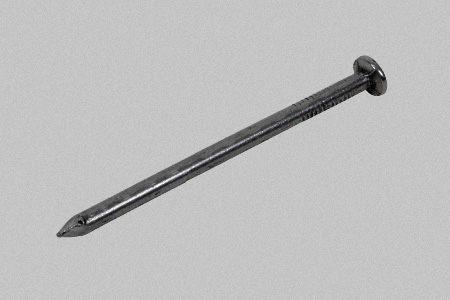
Round wire nails can be up to six inches in length and are great for tasks where strength is more important than a nice finish.
These nails aren’t the best-looking blokes on the block and therefore, are used for jobs where they can be hidden or where the final appearance doesn’t matter.
Tacks
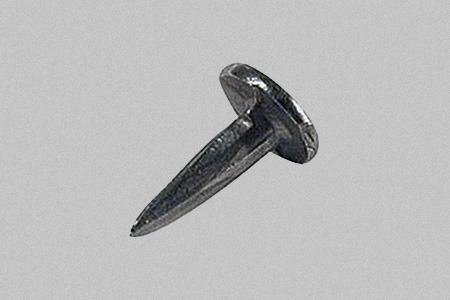
With flat, wide heads and a short body, tacks are commonly used to fix carpets, repair floorboards and stretch fabric onto wooden surfaces. These are tiny kinds of nails that stay out of your way once driven in.
Panel Pins
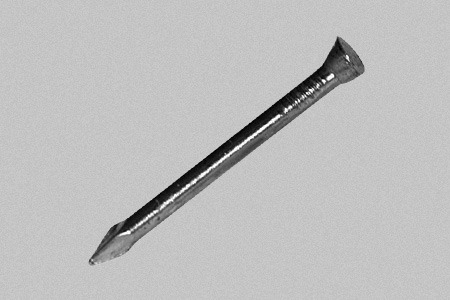
Panel pins are lightweight nail types that are round shaped, great for keeping small moldings in place or for making basic cabinets.
Oval Wire Nails
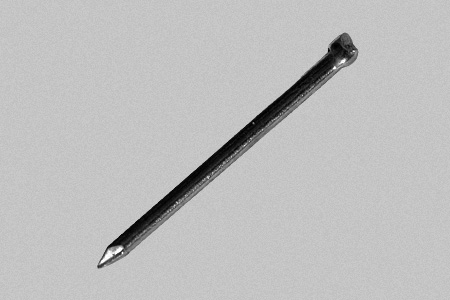
Oval wire nails are the better-looking version of round wire nails, though you can drive these below the wood’s surface if required. Some hammers have a magnetic notch that will hold the nail in place for you instead of using your fingers, which helps with these nails since they have such small head surfaces. These magnetic notch parts of a hammer are very convenient for many.
Oval wire nails present a very low risk of wood splitting and are great for joining pieces of wood. These nails can range in size from half an inch to six inches in length and are easy to drive under the surface.
Clout Head Nails
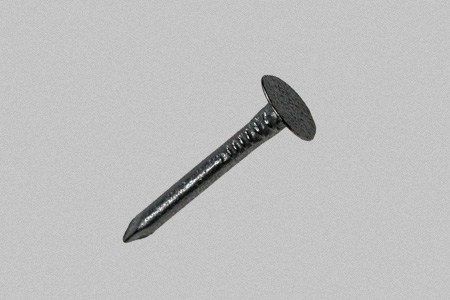
Featuring large, flat heads and a short body, clout head nails are mainly used for joining soft materials such as plasterboard and roof felt. Thanks to a body of galvanized steel, these types of nails are resistant to rust.
Lost Head Nails
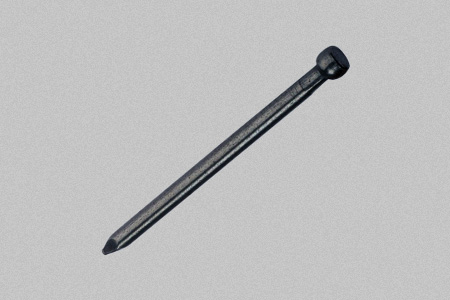
Also known as round head nails, these nails are strong and used in a range of applications. These are capable of being driven under the surface of the wood quite easily and are normally between half an inch to six inches long.
Square Twisted Nails
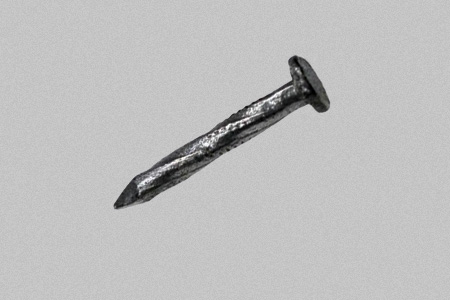
More expensive than regular nails, square twisted nails are great for jobs that are permanent and where you likely won’t want to remove the nail at all. It has great holding power that keeps two materials together.
The square twisted nail features a twisted shaft that is easily driven into wood and other materials with a screw-like action.
Drywall Nails
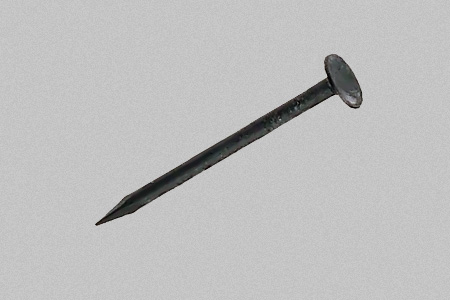
Drywall nails are designed specifically for use on all the different types of drywall. You can use these on the material without the fear of cutting the paper face.
Sprigs
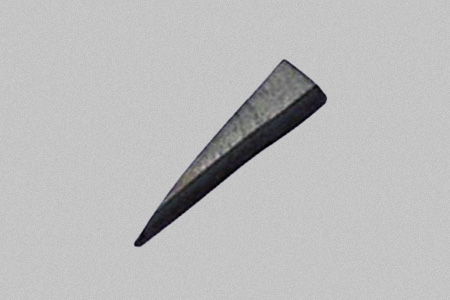
Sprigs are small nails that don’t have a head and are generally used to keep the glass in window frames in place before the putty job, which then covers the sprig. Sprigs can be between half an inch to three-quarters of an inch in size.
Upholstery Nails
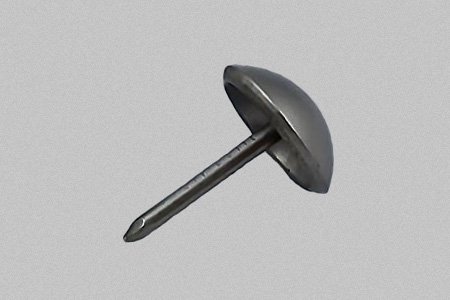
Upholstery types of nails feature a domed head, lending a decorative look to the project. Available in chrome, brass and other metallic finishes, these are available in numerous sizes and are used with tacks as a secondary fixing method to secure any types of upholstery fabric.
Staples
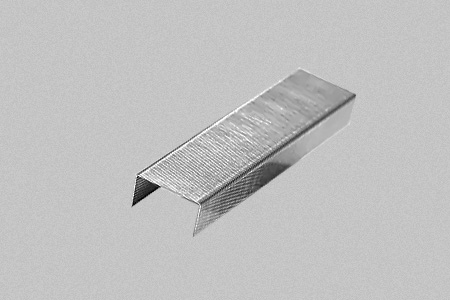
Staples resemble regular U-shaped staples with pointed ends on either side and are generally used to hold different wires in place. Staples have insulated linings that make them perfect for fixing flex, electric, and any types of video cables to the wall.
Hardboard Nails
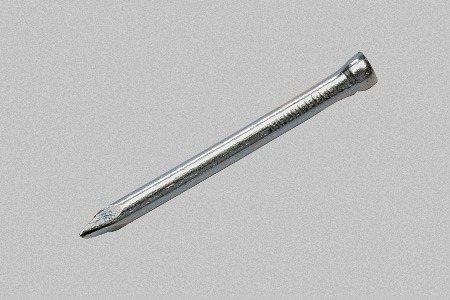
These nail types have diamond-shaped heads and turn invisible when driven into wood. Hardboard nails come in various sizes and lengths.
Cut Clasp Nails
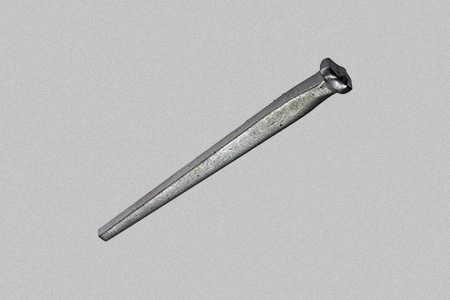
Cut clasp nails are super strong and nearly impossible to remove once driven in. These are great for pre-drilled wood and masonry. Cut clasp nails are rectangular in section and can range in length between one and six inches.
Types of Nails for Every Material & Surface
Nails come in various types and this isn’t an exhaustive list—there are also other styles such as glazing sprigs, carpet nails, corrugated nails, cap nails, spring head roofing nails and so on.
With these many types of nails available, achieving the finish you desire won’t be difficult and with our guide, you now know what types are available for your next project.



